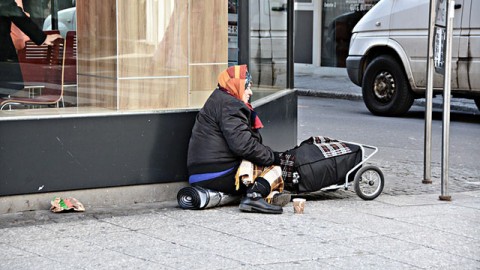Those on the left of the political spectrum are more likely than those on the right to notice social inequality, but only when it affects typically disadvantaged groups, a new study from the Kellogg School of Management at Northwestern University has shown.
Individuals often disagree about whether some groups face more unequal outcomes and treatment than others. Consider, for example, debates about whether men receive more airtime than women, or whether a company’s hiring practices adversely affect racial minorities versus whites. Where do these different perceptions come from?
By presenting everyone with the same information and considering how their perceptions differed, the authors asked whether some individuals are more likely than others to notice the existence of inequality.
The researchers identified two main groups across ideological lines: egalitarians, those who believe that groups in society should be equal; and anti-egalitarians, those who are more tolerant of inequality between groups.
The study found that these ideological beliefs about the desirability of equality influence whether people detect disparities between groups.
The paper, “Ideology selectively shapes attention to inequality,” will be published this week in the journal Proceedings of the National Academy of Sciences (PNAS).
In one study in the paper, participants were shown images of everyday urban life and were asked to report what they noticed. Some of the images contained cues related to inequality, for example, depicting both a luxury car and a homeless person in the same scene. Social egalitarians were more likely to naturally remark on inequalities in the image; anti-egalitarians were more likely to remark on other aspects. Inequality in this study always featured individuals belonging to societally disadvantaged groups (e.g., lower socioeconomic status) bearing the brunt of it. Perhaps egalitarians are more attuned to inequality when it affects societally disadvantaged groups. But does this extend to cases where societally advantaged groups (e.g., whites, men) receive unequal treatment?
In other studies in the paper, the researchers directly manipulated whether inequality harmed groups at the top or bottom of society. In one study, for example, participants read about an organization that had just completed their hiring process. They looked through a series of applicant resumes, which differed across five dimensions (race, GPA, major, hobby and hometown). After viewing each resume, participants learned whether that applicant was hired or not. There were two conditions of the task: in one condition, the organization was biased against minority applicants and, in the other condition, the organization was biased against white applicants.
“We found that when there was bias against racial minorities, social egalitarians were more likely to notice it than anti-egalitarians. In contrast, when there was bias against white students, social egalitarians were no more or less likely to notice it than anti-egalitarians,” said Hannah Waldfogel, a doctoral student in the department of management and organizations at Kellogg and a co-corresponding author on the study.
“Our results suggest that egalitarians are not more likely than anti-egalitarians to notice all forms of inequality, but rather that egalitarians’ heightened attention to inequality applies selectively to instances where inequality harms typically disadvantaged groups,” Waldfogel said.
Whereas existing research suggests that people process information in ways that are consistent with their pre-existing beliefs, the present work shows that people’s pre-existing beliefs about the desirability of group equality shape what they notice in the world around them in the first place.
“While some individuals assert that there is widespread inequality, others exposed to the same contexts believe that their peers see certain inequalities where none exist and selectively overlook inconvenient others,” said Nour Kteily, associate professor of management at Northwestern and a co-corresponding author on the study. “Our findings help to shed light on where these different perceptions of the same reality come from.”
“Addressing inequality requires a common, accurate understanding of the scope of the problem,” Kteily said. “Social egalitarians and the wider political left might be frustrated when others fail to notice the mistreatment that traditionally disadvantaged groups so often experience. As a function of their own perceptual tendencies, on the other hand, individuals more tolerant of inequality between groups, typically on the political right, might come to feel that egalitarians see inequality where none exists or that they selectively pay attention to some types of inequality but not others.”
Additional co-authors include Jennifer Sheehy-Skeffington (London School of Economics), Oliver Hauser (University of Exeter Business School) and Arnold K. Ho (University of Michigan).


